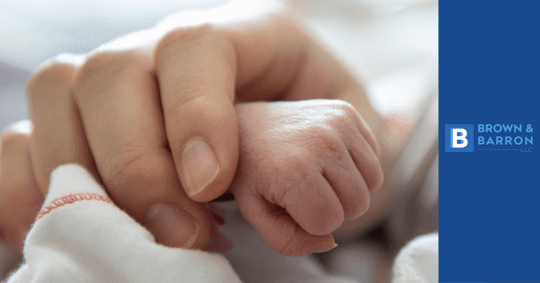One of the most devastating types of birth injuries is hypoxic ischemic encephalopathy (HIE). This birth injury is characterized by a brain injury that occurs when an infant’s brain receives insufficient blood during the birthing process, which starves the brain of oxygen. In many cases, HIE is caused directly by a medical provider’s mistakes, such as failing to notice signs of fetal distress or not reacting quickly enough to umbilical cord strangulation.
Although HIE has the potential to cause life-changing consequences for a newborn child, it is not a birth injury without treatments. Hypothermia therapy can prove surprisingly effective at limiting the symptoms of HIE. In some cases, permanent brain damage from HIE can be entirely avoided if cooling therapy is used quickly enough.
What is Hypothermia Therapy?
Hypothermia therapy – also called cooling therapy, neonatal cooling, and therapeutic hypothermia in some contexts – utilizes a specialized cooling blanket or cap to drop a newborn’s body or brain temperature below the point of homeostasis. At about 92.3 degrees Fahrenheit, the brain’s central metabolism is slowed. By cooling a baby with HIE, the slowed brain metabolism means the spread of brain damage is slowed, too. The treatment can allow damaged brain cells to recover, too, which could prevent life-long complications entirely.
When is Cooling Therapy Used?
Once a medical team suspects that a child was born with HIE, steps need to be taken immediately to begin cooling therapy. The cooling effect on the brain is most effective if done between 6 and 12 hours after birth. Based on the child’s condition, cooling therapy can be used for up to 72 hours.
Doctors are more likely to recommend cooling therapy if the baby:
- Suffered an oxygen-related birth injury.
- Required resuscitation after labor.
- Shows signs of severe acidosis (acid level buildup).
- Experienced umbilical cord complications.
- Has had a seizure shortly after birth.
- Otherwise shows signs of brain damage.
It is important to note that not all hospitals are equipped with NICU stations that can use cooling therapy on newborns. A child may need to be transferred to a different care facility if that is the case, which makes it all the more important for a medical provider to notice the signs of HIE early.
What Happens After Cooling Therapy for Infant HIE?
NICU staff will monitor a newborn’s vital signs during cooling therapy to ensure the child’s health remains stable. Some facilities may be equipped to monitor the child’s brain functions to get a clearer picture of how cooling therapy has reduced brain metabolism and blood flow.
Once treatment is over or 72 hours have elapsed, cooling therapy will need to be reversed by slowly rewarming the infant’s brain and body temperature. By slowly rewarming the brain, usually across several hours, blood flow is gradually restored, which reduces the risk of reperfusion injury (cell damage caused by a sudden increase in blood flow). If the child suffered a seizure before starting cooling therapy, the risk of another seizure will increase during the rewarming process, so medical providers should pay close attention to the newborn’s health in this process, too.
Lastly, when the newborn is rewarmed, further medical care and monitoring should be completed. There may be a risk of new complications that won’t show until hours or days after cooling therapy. Parents should not be surprised if several days of NICU treatment at least are recommended.
Can You Sue If Your Child Needs Cooling Therapy?
If your child required cooling therapy for HIE, you might be able to file a birth injury claim against the medical providers who caused the HIE or failed to prevent it. Every case is unique, and its unique circumstances will determine if there is room for legal recourse. Don’t just guess if you can file a claim in pursuit of justice and compensation that can make your child’s upbringing easier, though. Let a trained and experienced birth injury lawyer review your case and see what can be done.
Brown & Barron of Baltimore, Maryland, is a law firm comprised of attorneys who intentionally focus on complex birth injury claims, as well as lawsuits that deal with other life-changing injuries. With more than $90 million recovered for our clients, including numerous multimillion-dollar verdicts and settlements for birth injury and permanent injury cases, we should be your first choice for legal counsel and representation during such a challenging time.
Call (410) 698-1717 or contact us online to discuss your legal options after your child needed cooling therapy due to HIE at birth.


